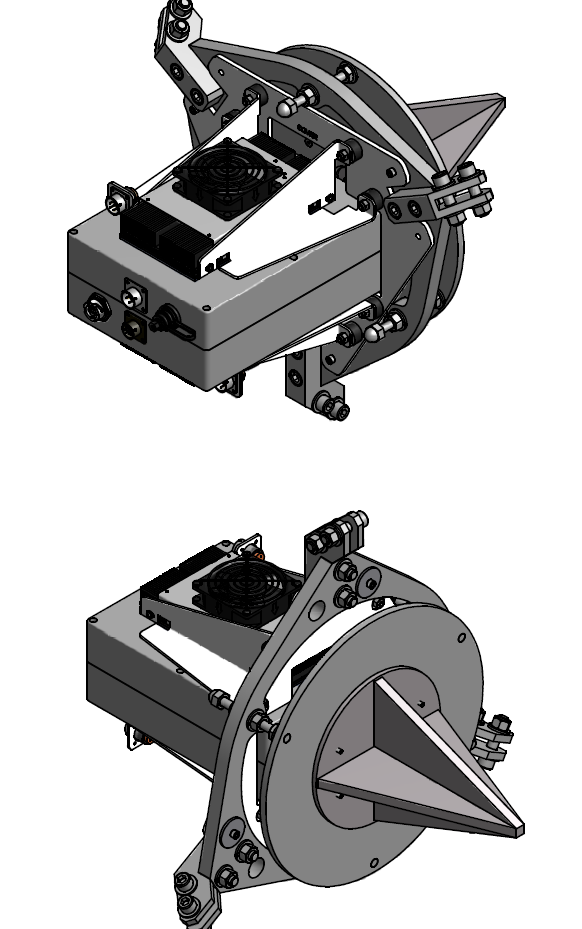Hardware Overview: Difference between revisions
Jump to navigation
Jump to search
| Line 1: | Line 1: | ||
== Frontend System == | == Frontend System == | ||
[[File:Feed_package.png|thumb|right| | [[File:Feed_package.png|thumb|right|150px|Two perspective views of the 2.1-m antenna front end feed package]] | ||
The front end system consists of a broadband (1-18 GHz) dual-polarization log-periodic crossed-dipole feed, and a thermally-controlled RF box that houses the amplifiers, calibration noise source (noise diode), attenuators, and optical transmitters needed to control the gain of the system and supply the two RF signals multiplexed onto a single optical fiber output. | The front end system consists of a broadband (1-18 GHz) dual-polarization log-periodic crossed-dipole feed, and a thermally-controlled RF box that houses the amplifiers, calibration noise source (noise diode), attenuators, and optical transmitters needed to control the gain of the system and supply the two RF signals multiplexed onto a single optical fiber output. | ||
Revision as of 15:54, 3 March 2017
Frontend System
The front end system consists of a broadband (1-18 GHz) dual-polarization log-periodic crossed-dipole feed, and a thermally-controlled RF box that houses the amplifiers, calibration noise source (noise diode), attenuators, and optical transmitters needed to control the gain of the system and supply the two RF signals multiplexed onto a single optical fiber output.
File:Eovsa front end block.png
Front End
The frontend system has two 5-bit digital attenuators in each polarization (H and V). Each one is adjustable between 0-31 dB in 1 dB step.


